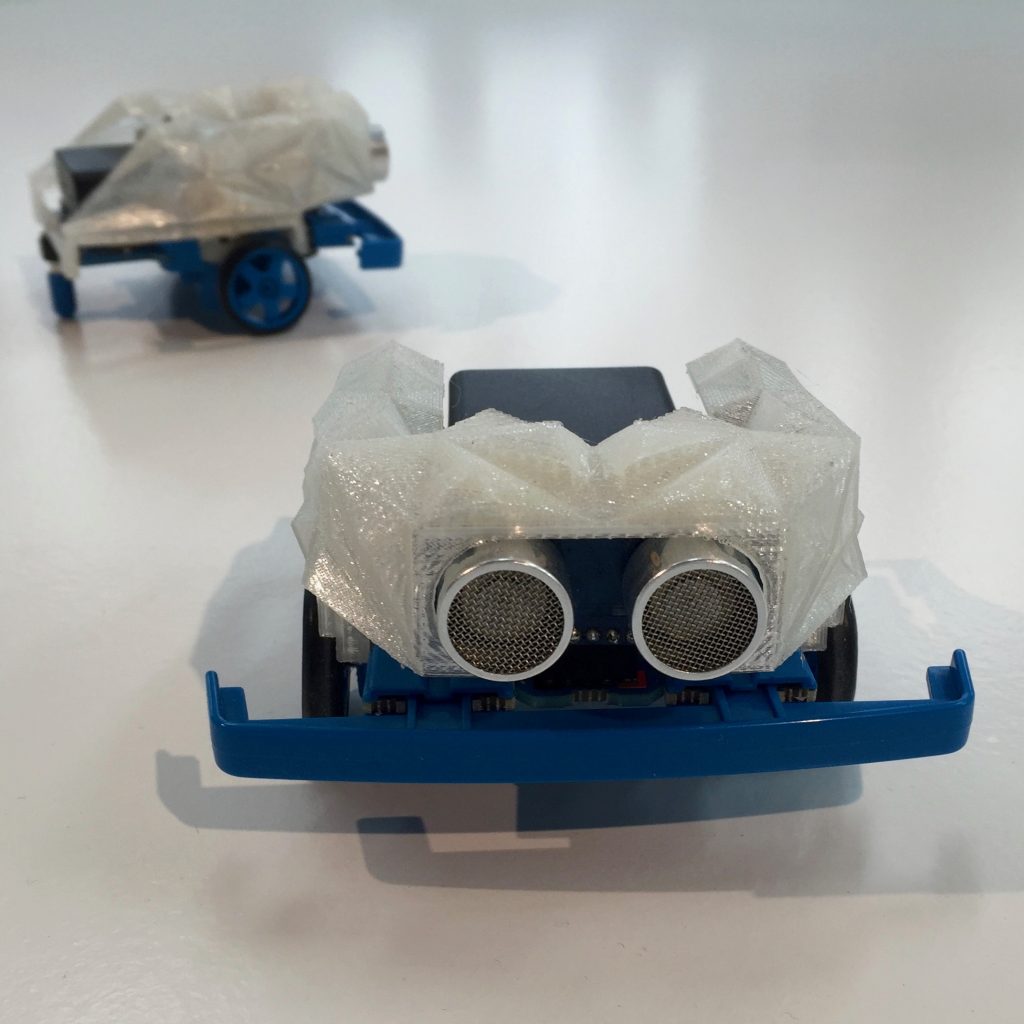These tiny (almost cute) identical swarm robots do not appear to like each other, the walls of their pen, or visitors’ efforts to interact with them. In fact they are programmed to use their ultrasound detectors to measure if any physical object is in their ‘personal space’ and intelligently avoid it. While the code running on each robot is the same, their creative emergent behaviours can appear complex and almost predatory.
the “Antisocial Swarm Robots” (2015-17) expose the subtle and complex emergent behaviours that humans will psychologically perceive as having a wide range of high level priorities, even emotions and desires. With the promise of socialised robots in our workplaces, environments, leisure spaces and homes, these complex automated relationships will need to be designed by the programmers, and understood by the rest of us.
“Anti-Social Swarm Robots” is an artwork by Anna Dumitriu and Alex May that explores how humans psychologically perceive the programmed actions of robots by projecting their own meanings and emotional responses on to them.
Visitors to the artwork are confronted by a group of swarm robots that chaotically explore their world, in this case a low table sized plinth with a raised edge, like an animal pen. The tiny ‘creatures’ appear to have characters, and visitors can play with them by putting their hands in the pen and interacting. But the robots appear nervous of the visitors, afraid of each other and daunted by the edge of their world, sometimes even angered by it. The artwork elicits emotional responses from visitors who project human or animal like behaviours on these individual clusters of digital components.

Exhibitions
The finished commissioned artwork builds on a successful working prototype piloted at The Royal Academy of Art in London as part of the Digital (Dis)connections: Ai Weiwei Late event in October 2015. When the early prototype version was exhibited at the Royal Academy of Art in London in 25th May 2015 visitors commented that they were like little creatures, such as crabs or mice or even commuters during rush hour. Some found them cute, and people picked their favourites. Occasionally a robot would get stuck in a corner and a visitor would feel sorry for it and help them escape. One person even stroked a robot on the top of its battery pack. The editor in chief of New Scientist magazine tweeted about the prototype saying: “this is actually proper brilliant: biomimicry of a behaviour we don’t consider useful“
The piece was commissioned by The Science Gallery Dublin and shown as part of Humans Need Not Apply (curated by William Myers, Damian Henry, Amber Case Lynn Scarff and Ian Brunswick) from 10th February – 21st May 2017.
“Anti-Social Swarm Robots” was exhibited QUAD Derby to be part of “Our Friends Electric” which took place from 1st July – 10th September 2017
“Anti-Social Swarm Robots” was shown in Lodz Design Festival in Poland in May 2018 and from November 2018.
“Anti-Social Swarm Robots” was shown as part of “A World Without Us” 10th December 2018 – 3rd February 2019 at IMPAKT in Utrecht, Netherlands.
“Anti-Social Swarm Robots” was exhibited in “Machine Divas” at Schaumbad – Freies Atelierhaus Graz, curated by Eva Ursprung as part of steirischerherbst’19. 19th September – 13th October 2019.
“Anti-Social Swarm Robots” was exhibited in “Intelligent Machinery” at Ugly Duck London, UK from 27th – 29th September 2019.
